Sacheonwangsa-ji Temple Site – 사천왕사지 (Gyeongju)

Temple Site History
This is the former site of Sacheonwangsa Temple, which was built in 679 A.D. during Later Silla (668-935 A.D.). It was the first temple to be built by the Silla Kingdom after the unification of the Three Kingdoms (Silla, Baekje, and Goguryeo). The Sacheonwangsa-ji Temple Site is located near the royal tombs of King Sinmun of Silla (r. 681-692 A.D.) and Queen Seondeok (r. 632-647 A.D.) at the foot of Mt. Nangsan (99.5 m) in Gyeongju. The foundation of the temple is rooted in the protection and safety of the Korean peninsula through the protection of the Buddha. It can be said that Sacheonwangsa Temple was built as a nation protecting temple.
Sacheonwangsa Temple means “The Four Heavenly Kings Temple” in English. And it was established in 674 A.D. to call upon the power of the Buddha to help defeat the forces of Tang China (618-907 A.D.), who were preparing to invade the Silla Kingdom. Having allied themselves with the Chinese Tang Dynasty in the 7th century, and under the rule of King Muyeol of Silla (654-661), Silla was able to defeat and subjugate the Baekje Kingdom. Then in 668 A.D., now under the rule of King Munmu of Silla (661-681 A.D.), and through the leadership of Gim Yu-shin (595-673 A.D.), the Silla Kingdom defeated and conquered the Goguryeo Kingdom to the north. It was after these two victories, and the unification of the Korean peninsula under Unified Silla rule, that Silla would have a decade long war to expel Chinese forces from the Korean peninsula. The Tang Dynasty wanted to create Tang colonies to unify their kingdom as far north as Pyongyang.
According to a legend, the Tang forces were quickly approaching the Korean peninsula, when there was not enough time to complete the temple. Construction of Sacheonwangsa Temple began in 674 A.D. with the advanced warning that Tang China were sending an army of half a million soldiers across the sea to attack the Silla Kingdom in the Jeongju area. The plans for the invasion of the Korean peninsula were discovered in February, 674 A.D. by the monk Uisang-daesa (625-702 A.D.). Immediately, Uisang-daesa returned to Silla and informed King Munmu of the Tang plans. Surprised by such a revelation, King Munmu of Silla sought the advice of the monk Myeongnang.
The monk Myeongnang went to Tang China to study in 642 A.D. There he learned Esoteric Buddhism, which believed that by reciting the words of the Buddha you could attain Buddhahood. After returning to Korea, Myeongnang created the Sinin sect of Buddhism, which focused on the esoteric form of Buddhism. This Sinin method of Buddhist speech is believed to have helped destroy the seaward Tang Chinese forces. By reciting incantations, it was believed that if a person had a disease, or was in mortal danger, or a nation was in danger, the Four Heavenly Kings would come and defend that person or nation with seventy thousand spirit soldiers.



Myeongnang instructed King Munmu of Silla to build a temple, which would become Sacheonwangsa Temple, in an effort to help thwart Chinese aggression and gain favour with the Buddha’s intervention on the Silla Kingdom’s side. Quickly, a makeshift shrine hall was created out of silk fabric and rice straw. A Buddhist altar was constructed and Buddhist incantations were performed to pray for the the kingdom from destruction at the hands of the Tang China army. Before the battle even started between the Silla and Tang forces, a great wind arose and sunk the Tang’s entire fleet and the forces it carried. The temple’s construction was completed five years later in 679 A.D.
The temple site was partially destroyed during Japanese Colonial Rule (1910-1945) with the construction of railroad tracks across the northern part of the temple grounds. Through an extensive excavation that was conducted from 2006 to 2009, the remains of various buildings were found at the Sacheonwangsa-ji Temple Site, including a central gate, two foundations for wooden pagodas, a main shrine hall, and a lecture hall. The arrangement of the temple grounds are typical of Silla temples like those found at the Gameunsa-ji Temple Site in eastern Gyeongju and the neighbouring Hwangnyongsa-ji Temple Site in central Gyeongju.
Presently, there is one flagpole support at the entry to the temple grounds from the highway, and there are two additional tortoise-shaped pedestals that were also found. Shards of green-glazed brick carved with depictions of guardians were also excavated from the site around the foundations to the wooden pagodas that formerly stood at Sacheonwangsa Temple. It’s believed that these bricks were made by Yangji, the greatest sculptor of the Silla Dynasty.
The temple is also famous for its connection with the eminent monk Wolmyeong, who left behind two famous poems, Dosolga or “Song of the Heaven of Joy” in English, and Jemangmaega or “Song for My Deceased Sister” in English.



Temple Site Myth
Before Sacheonwangsa Temple was completed, and according to the Samguk Yusa (Memorabilia of the Three Kingdoms) it’s stated of Queen Seondeok of Silla (r. 632-647 A.D.):
“…one day while the Queen was still in perfect health, she called her courtiers together and said ‘I will surely die in a certain year, in a certain month, on a certain day. When I am gone, bury me in the middle of Doricheon [Tushita].’ The courtiers did not know the place and asked the Queen where it was, whereupon she pointed to the southern hill called Wolf Mountain [present day Mt. Nangsan].’

“On the very day she had predicted the Queen died, and her ashes were interred on the site she had chosen. Ten years later (656) the great King Munmu had Sacheonwangsa Temple built beneath the Queen’s tomb. Buddhist scripture alludes to two heavens called – Doricheon [Tushita] and Sacheonwangcheon [Sumeru]. All were amazed at the Queen’s premonition and knowledge of the afterlife.”
It was just over thirty years after the death of Queen Seondeok that Sacheonwangsa Temple was completed near Mt. Nangsan. This mountain was believed to be Mt. Sumeru, which is the centre of Buddhist cosmology, and it’s guarded by the Four Heavenly Kings, or “The Sacheonwang” in Korean. And while the Samguk Yusa is a bit off with the year of Sacheonwangsa Temple’s founding, the story highlights just how important and influential Buddhism was to the Silla Kingdom and its people’s thinking.
Temple Site Excavation
Perhaps the Sacheonwangsa-ji Temple Site is most famous for the three wild-eyed green-glazed sculpture tiles that were unearthed on the site. These three tiles depict guardians that are now housed at the Gyeongju National Museum in their permanent collection.

Sacheonwangsa Temple came to prominence, once more, in 1916, during Japanese Colonial Rule (1910-1945). At this time, the Japanese historian Ayukai Fusanoshin discovered a shard of the green-glazed tile with an image of a Buddhist deity seated on a monster at the temple site. In 1918, the Japanese Government General started an excavation project at the Sacheonwanga-ji Temple Site in hopes of uncovering even more fragments of the green tiles. This excavation resulted in the unearthing of the temple boundaries, the layout of the temple, and the scale of the temple size. However, what it did not do was locate the exact location of the origins of these fragmentary tiles, and whether there might be more. The tile shards that were discovered were then placed in the custody of the Gyeongju branch of the Government General, which is presently the Gyeongju National Museum.
After Korea regained its independence in 1945 from the Japanese, additional research revealed that the fragmentary tile pieces at the museum in fact came from two separate images. However, further site discoveries were discontinued. Finally in 2006, the Gyeongju National Research Institute decided to conduct an extensive excavation of the Sacheonwangsa-ji Temple Site. This excavation would last until 2012, and it would uncover numerous artifacts including additional tile shards.
During the seven year project, it was revealed that these tile fragments were situated around the base of the wooden pagodas that once took up residence on the temple grounds in the eastern and western sections of the temple site. Each base consisted of two sets of three sculptural tiles on each side of the pagoda. There were different guardian images that appeared around the base of these wooden pagodas. In total, there would have been a total of forty-eight tiles adorning the base of both the eastern and western wooden pagodas at Sacheonwangsa Temple.

In total, there were about two hundred green-glazed tile fragments that were discovered on the temple site. After a long and difficult process which included 3-D scanning of the tile images, the Gyeongju National Research Institute successfully re-assembled the pieces to form three different distinctive tiles bearing the image of guardians.
In these three guardian tiles, one guardian is holding a sword in their left hand, while another tile guardian has a bow and arrow, while the other is holding a sword in their right hand. What’s interesting about these three images is the inclusion of the Indian mythological sea creature from Hinduism. Makara is included on the corner edges of the tiles. Also, the appearance of the three guardian deities allows historians to believe that their creator, the monk Yangji, who was a Buddhist monk, was originally from either Western or Central Asia.





Temple Site Layout
You first approach the Sacheonwangsa-ji Temple Site off of the busy Saneop-ro Road, which leads up to Bulguksa Temple to the south. The first thing to greet you at the temple site is the stone flagpole supports to the left near a cluster of trees and flowers. Straight ahead and to the left, you’ll notice the newly redone West Wooden Pagoda foundation.
But before climbing to the plateau where the Sacheonwangsa-ji Temple Site is located, you’ll notice a pair of tortoise-based biseok to the right and down the embankment near the gutter of the road. Of the two, the western biseok is better preserved, but both are without heads. It’s unclear whether they were broken off, or they simply fell off. It seems as though the two were monuments for King Munmu of Silla, as there are places for a protective cover to be placed. With all that being said, it’s rather strange to find two historic monuments that are over 1,300 years of age being placed where they currently are.
Finally standing on the temple site grounds, you’ll notice the newly redone West Wooden Pagoda foundation. The foundation has recently be redone over the course of the past couple of years. There are replicas of the green-glazed tiles surrounding the base of the pagoda site’s foundation. You can now stand on top of the pagoda site’s foundation with still a few of the original stone supports on top of the foundation. And to the right of this recently redone foundation, you’ll find the East Wooden Pagoda foundation. Unlike the foundation to the west, this eastern foundation remains in its original state still untouched. The foundation still remains with grass protruding out from the cracked stones that appear on top of the East Wooden Pagoda. And the foundation is uneven in most places, which makes it look like a small hill.
Sacheonwangsa Temple became the first Silla temple to have twin pagodas in its temple courtyard. Before that, it was custom to have a single pagoda in the main temple courtyard. This style is then duplicated by the twin stone pagodas at Gameunsa Temple. It was from these two locations that the aforementioned green-glazed tile shards were taken from.
Between these two stone foundation sites, you’ll see a long rectangular elevated site. This is known as the Geumdang-ji, which was the former site of the main hall at Sacheonwangsa Temple. The elevated stone foundation appears to be around thirty metres long and twenty metres wide. Some of the foundation stones still stand in place on the site.
To the rear of the Geumdang-ji are the Dongdanseok-ji and Seodanseok-ji. It’s unclear what these sites formerly housed; but based upon the design of other similar Silla temple sites, it would appear as though one of these foundations were used as a lecture hall.
A couple notes about the temple site. After having completed their excavation ten years prior, the Sacheonwangsa-ji Temple Site remained in disarray. It’s only since 2023 that the temple site was finally put in order and the West Wooden Pagoda foundation was erected to help compare with the East Wooden Pagoda foundation that still remains in its original state. Another interesting point to be made about the temple site is that during Japanese Colonial Rule a railway track was run through the north-east portion of the temple grounds cutting off a portion of the former Sacheonwangsa Temple grounds.
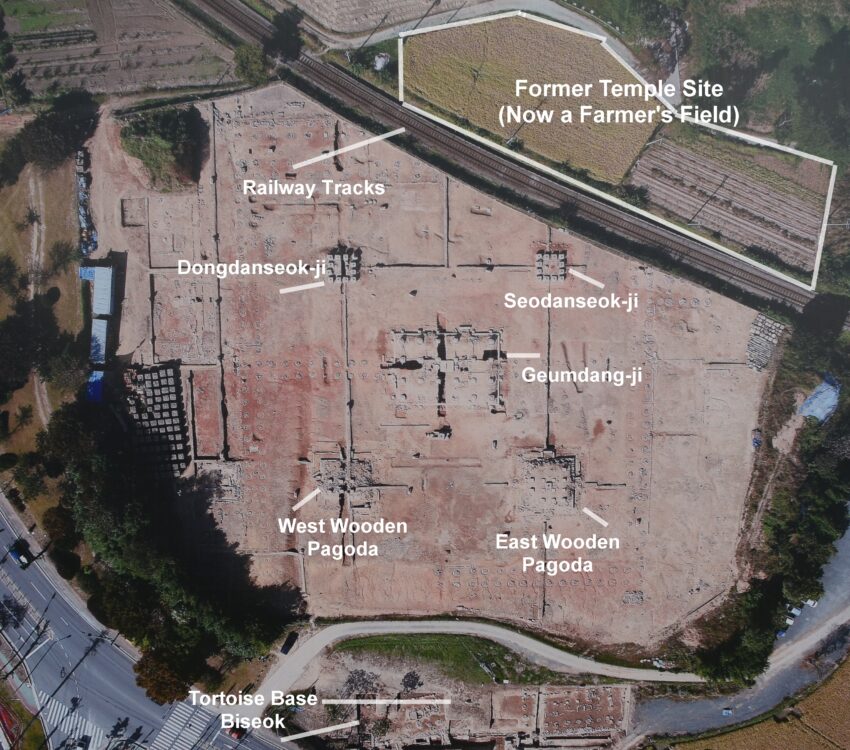
How To Get There
From the Gyeongju Train Station, you’ll be able to get to the Sacheonwangsa-ji Temple Site. There’s a bus station called the “Gyeongju St., Post Office Stop – 경주역, 우체국 정류장” from out in front of the train station. You can take any number of buses to get to the Sacheonwangsa-ji Temple Site like Bus #11, #153, #601, #602, #603, #604, #605, #607, and #609. After seven stops, you’ll need to get off at the “Namsan Ipgu Stop.” From this stop, you’ll need to walk three minutes, or two hundred metres, to get to the Sacheonwangsa-ji Temple Site.
Overall Rating: 4/10
Unfortunately, there is almost nothing that remains at the Sacheonwangsa-ji Temple Site other than the stone flag supports and the twin tortoise based biseok. The foundation stones are impressive, especially when you imagine just how spectacular the twin wooden pagodas must have looked like as they reached up into the Gyeongju sky. Now, passing through the knee high wild grass that grows at the temple site, all you are left with are thoughts of what had once been. It’s quite the experience to make your way around the temple site alone with your thoughts.
Pictures at the End of the 2006-2009 Excavation

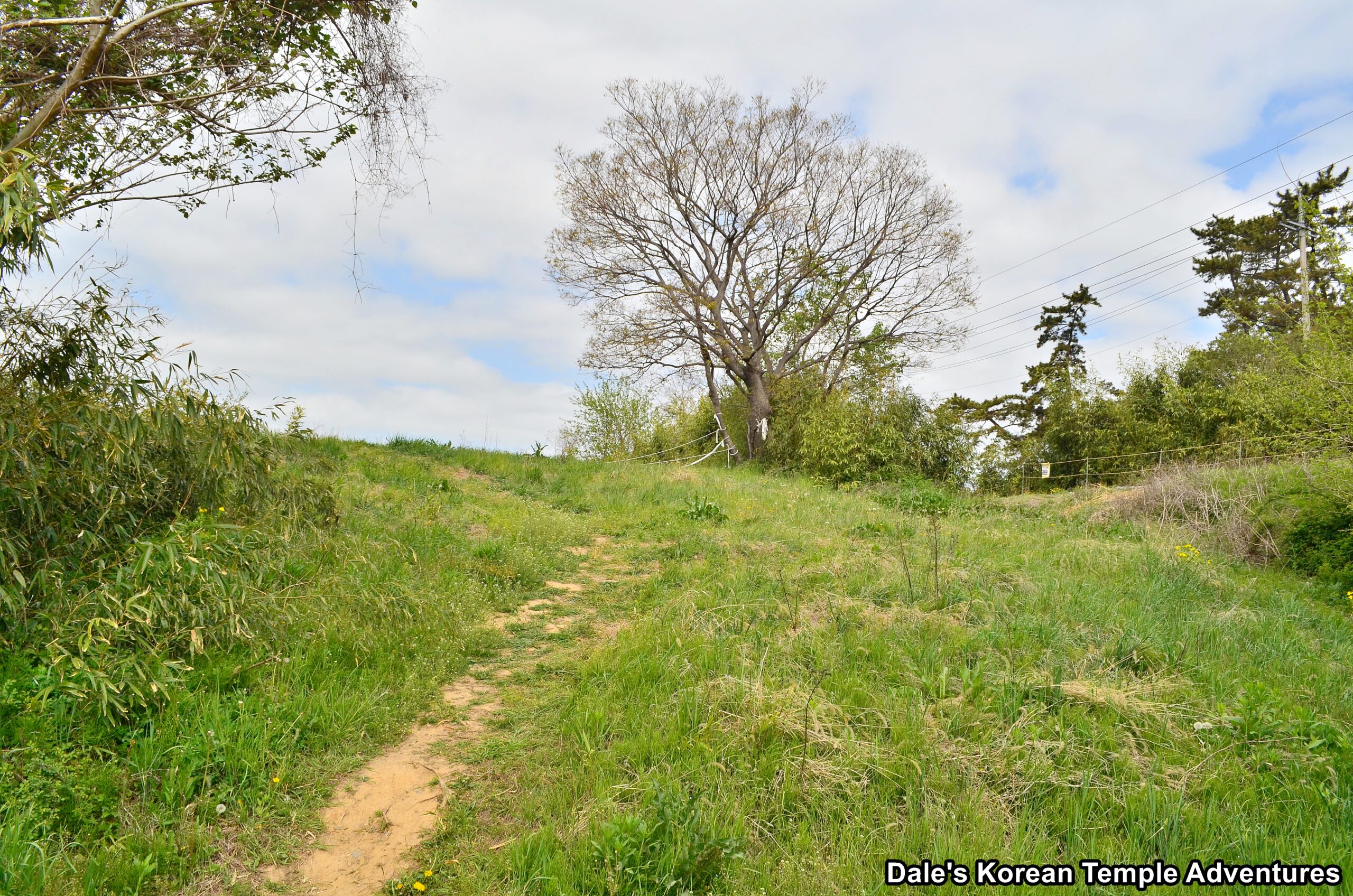
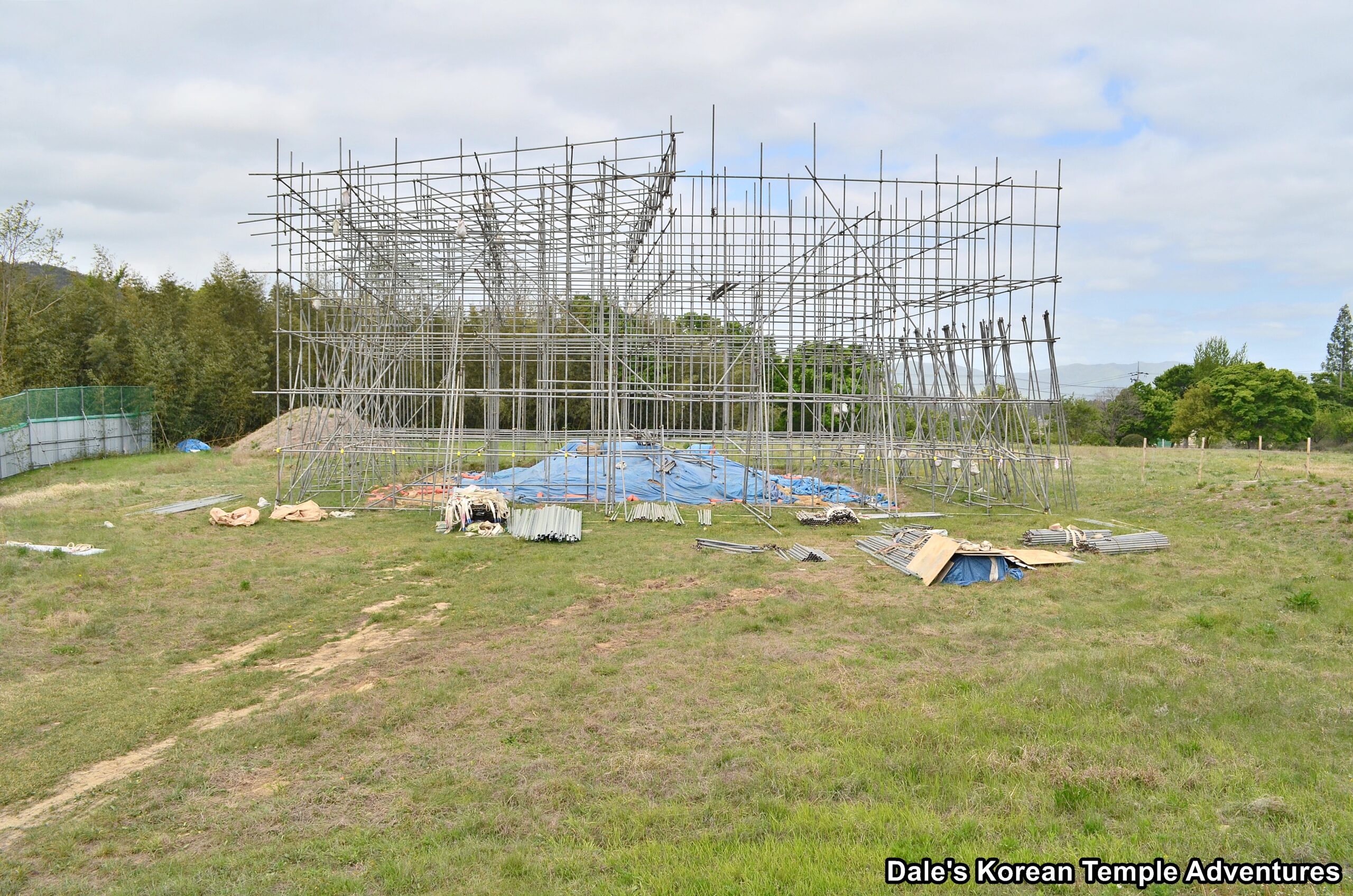
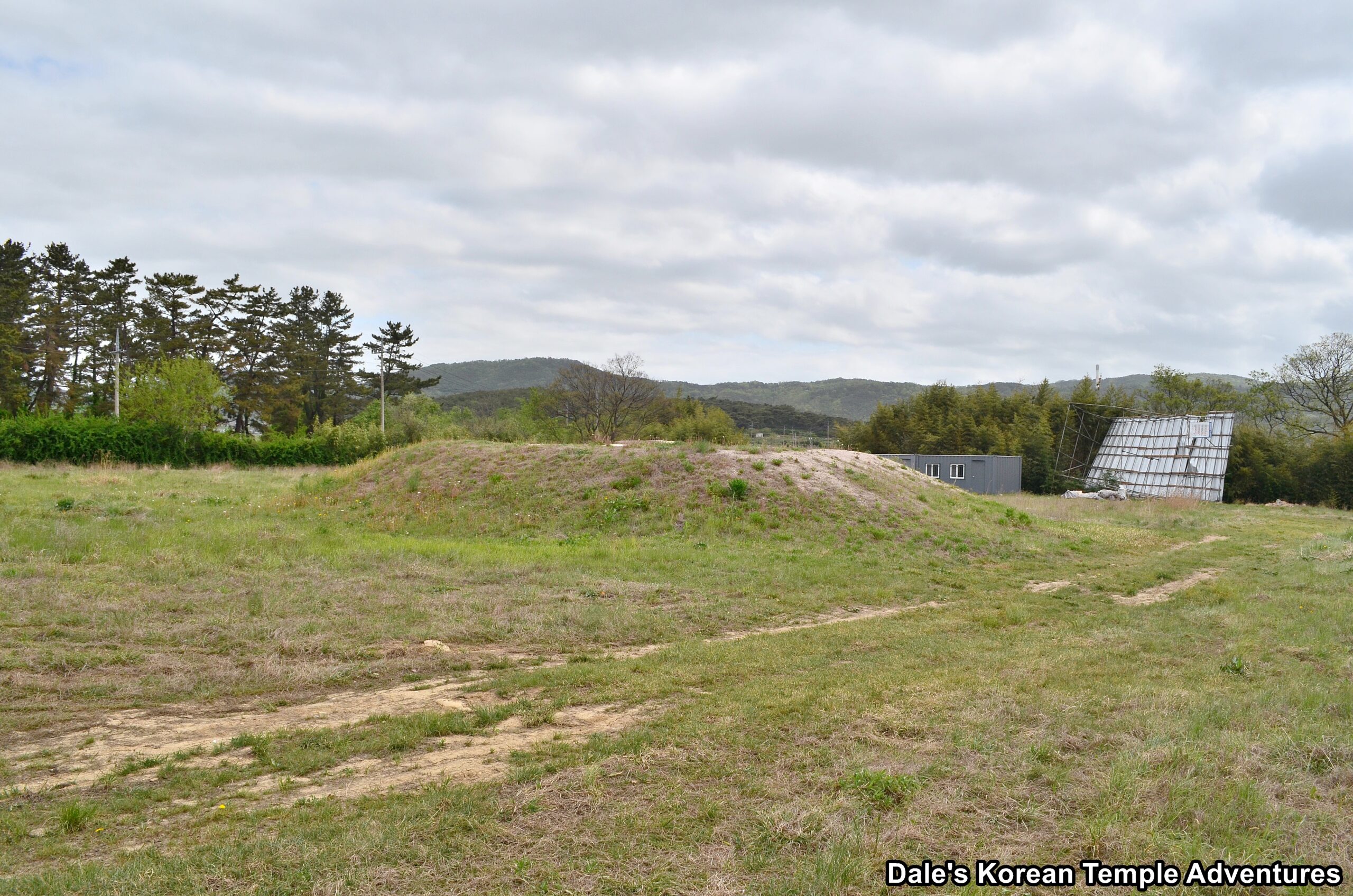
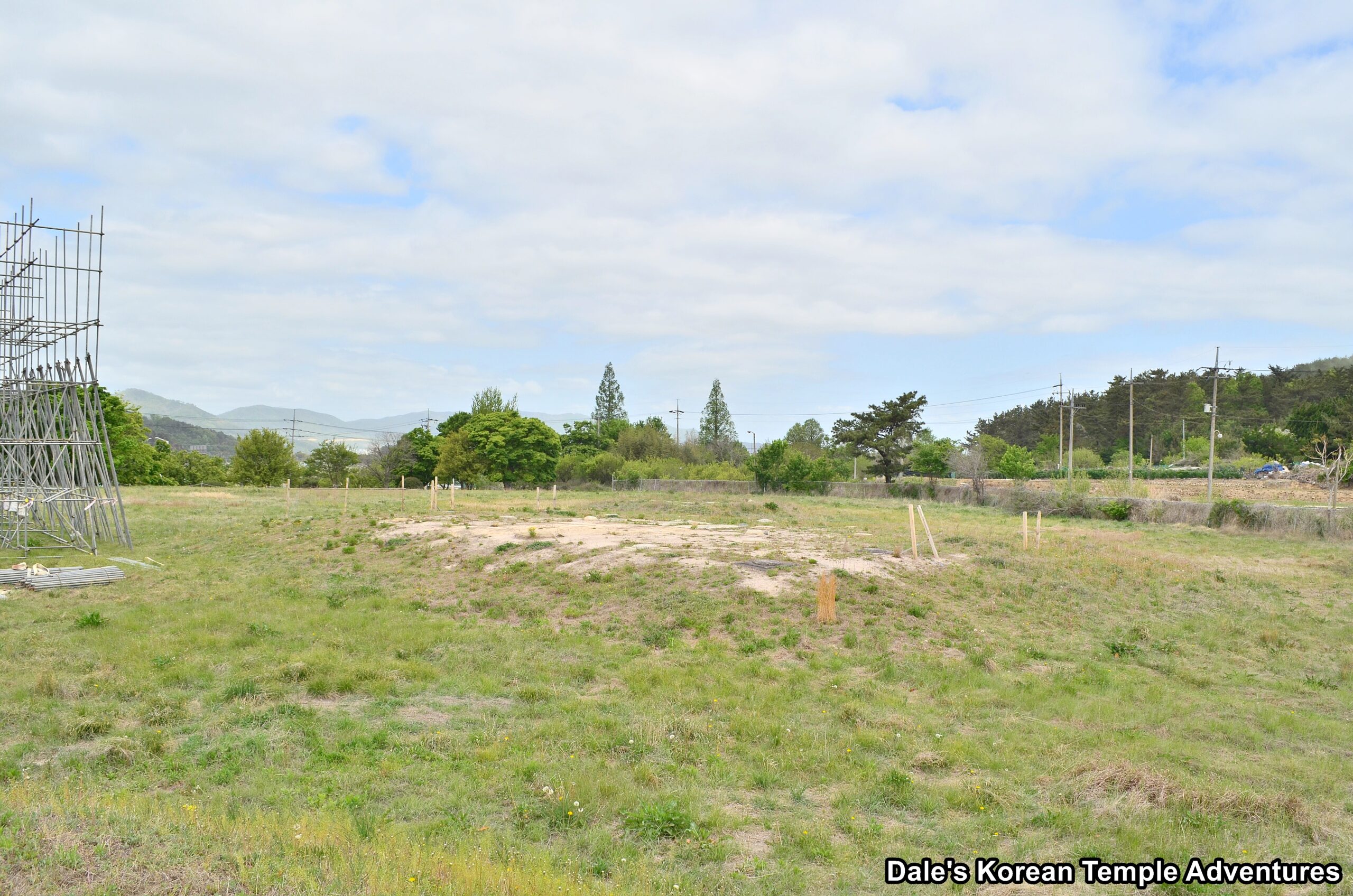
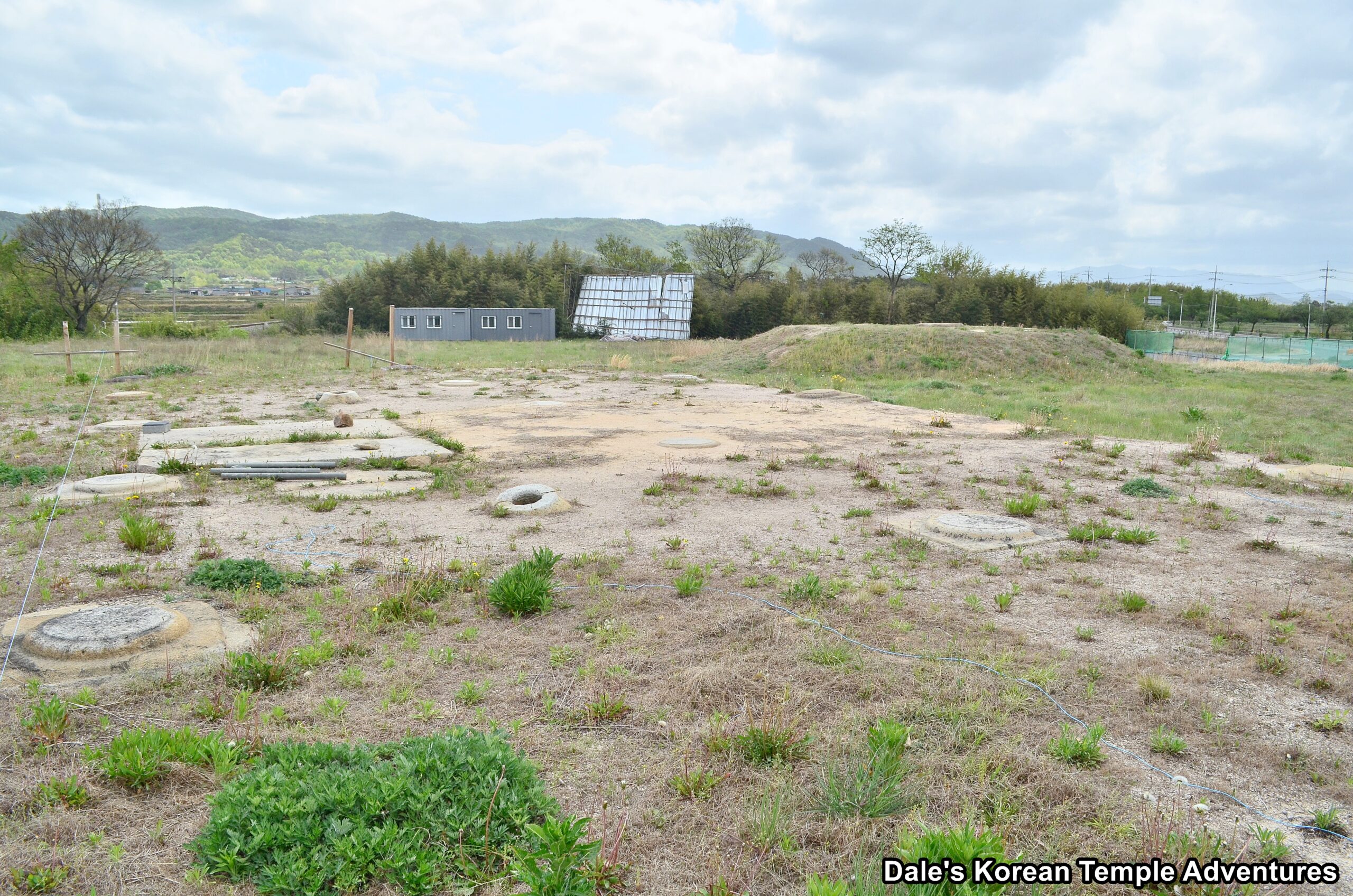
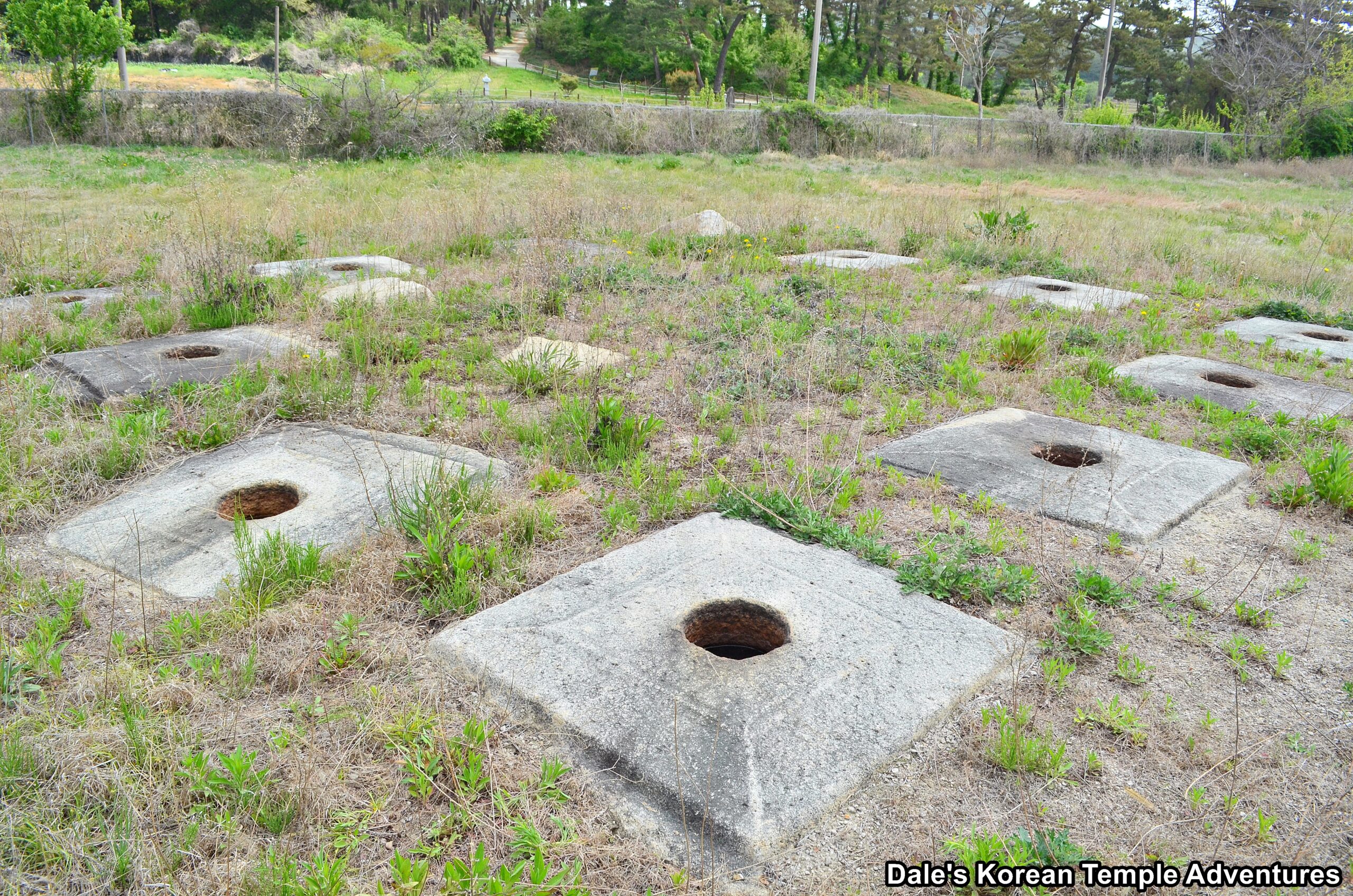
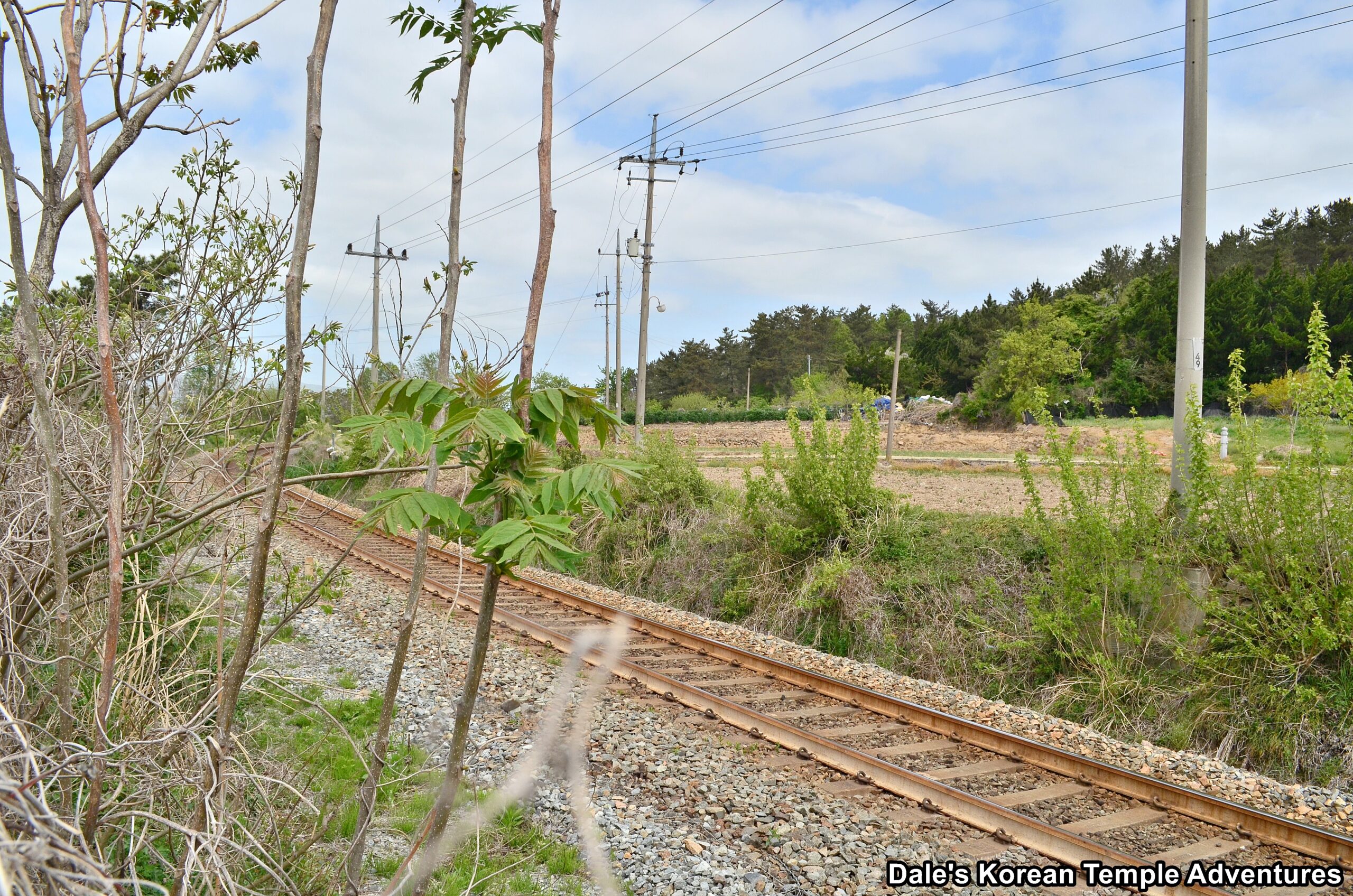
Pictures After the Excavation in 2023








